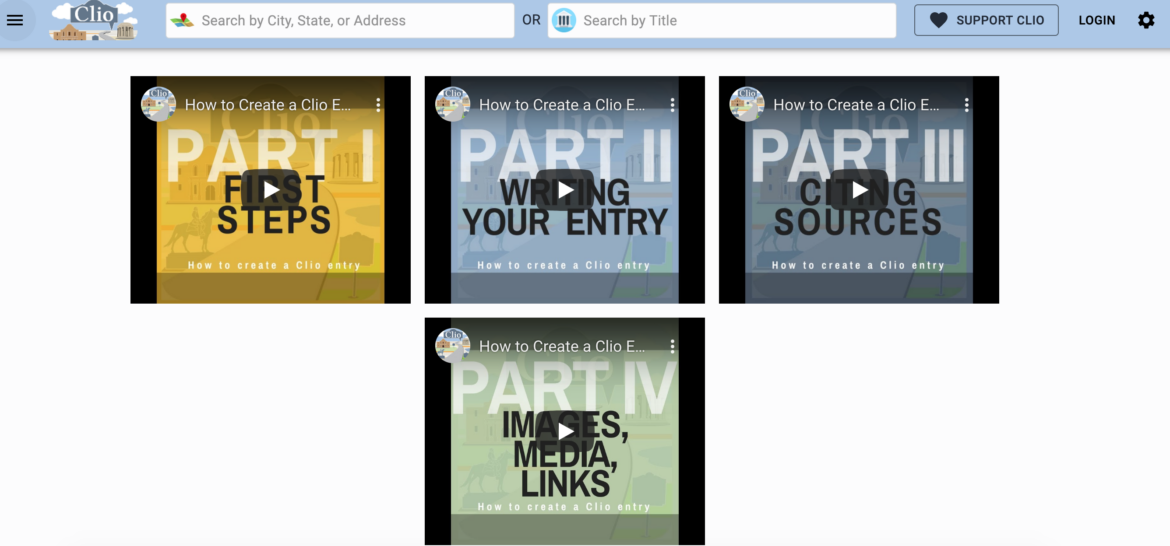Even when much of our time is spent at home, learners and educators can still get out and explore history. We can even do so virtually, and in the process, build deeper connections between students, schools, and local communities. Today we have new digital tools that students can use to learn local history and even explore their genealogy and family history.
In this post, we’ll explore a few tools any educator can use to help learners discover the histories and stories of their own towns, schools, and local areas, even when teaching remotely.
The Power of Local History
What’s the history of the community you teach or learn in? While we may know the broad strokes of the state or region we live in, local history is often tucked away on historical markers or in collections at the local library.
Digital tools can bring that hidden history to light, with students as the primary investigators in building the story of where they live. Students may want to work on an oral history project, activities based on local historic buildings or monuments, or even their own family history and genealogy. Growing amounts of Open Educational Resources can also help boost and preserve local history, too.
Writer Coshandra Dillard outlines the vitality of local history in an article from Teaching Tolerance.
It’s hard to find real local history in textbooks, and it takes courage to teach these hidden, hard histories. But it’s not hard to help students uncover this history. They can start with the origins of the names of streets, schools and government buildings in their city. Or they can consider how the hard history of our nation played out in their community. After learning about the slave trade, they might explore the lives of enslaved people who lived in their town. When learning about the courage of youth during Freedom Summer, they can track the fight for voting rights. Or they can learn about their district’s integration story and compare it to the Little Rock Nine and other stories.
Local history helps students better understand their community, as well as the inequities in education, poverty, health outcomes and other issues that they see around them every day.
“Recovering and Teaching Local History” Coshandra Dillard. https://www.tolerance.org/magazine/recovering-and-teaching-local-history
As Dillard notes, the history of individual communities can be an effective way to learn about the struggles for civil, political, and economic rights that we are seeing resonating in U.S. society today.
Learning in Our Genes
With the number of genealogy services and products available today, understanding your own personal history is easier than ever, even with tools for the classroom.
One way for students to “do” the past as historians is to research their family’s past. Researching family history helps students create context for studying the past and helps students develop a sense of place in the present. In addition, a family history project can help foster connections with students’ guardians at home and help us, as teachers, better understand our students’ backgrounds. A student genealogy project is certainly not a new idea, but new online tools make it easier than ever to uncover family records and connect distant relatives.
“Joe Jelen on Discovering History Through Student Genealogy Research” Joe Jelen. https://teachinghistory.org/nhec-blog/25372
Educators looking for free, digital resources can check out these activities from the National Archives, or a number of family tree activities from FamilyHistoryDaily.com.
Meet Clio
Inspired by the ancient Greek muse of history, Clio is an interactive online database of local historical information, perfect for students and teachers looking to build local connections and all sort of skills from reading to social studies standards.
Clio allows classrooms, institutions, and individuals to create accounts and add to the vast project of local history. Then they can edit and add entries for historic sites, people, and places, complete with interactive maps, videos, easy-to-use citations, and accessibility features like text to audio. Several entries can even be combined into a tour, allowing users to explore multiple thematically-related sites and events.
Using Clio
The National Endowment for the Humanities’ EDSITEment! page includes tips on how to effectively use Clio in your teaching. Be sure to check out their recommendations.
Below, you can also enjoy step-by-step videos that guide you through the use of the Clio platform.
More Resources
- Resources for Teaching Local History from TeachingHistory.org
- Exploring Community Through Local History: Oral Stories, Landmarks and Traditions, a lesson plan from the Library of Congress
- The Library of Congress also supports the Local History & Genealogy Reference Services.

